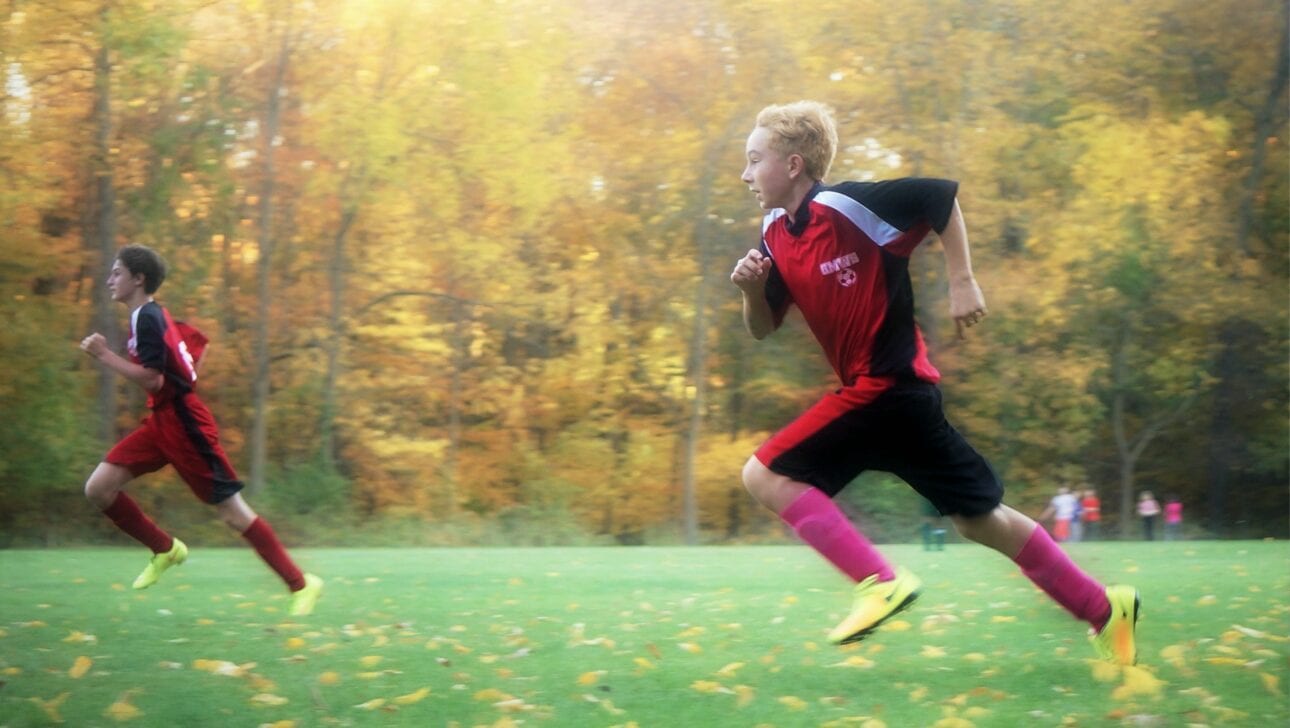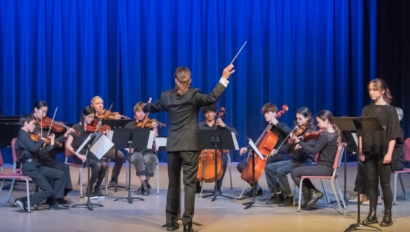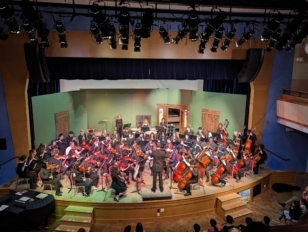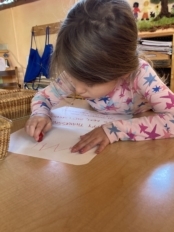by Douglas Gerwin
Perhaps even more widespread than the current Covid-19 outbreak is a pandemic of fear and anxiety reaching down from adults into the lives of young people and arresting their ability to learn. As a long-time high school teacher, Douglas Gerwin reflects on the root cause and possible remedy for today’s youth.
In teaching high school students, I encounter fewer cases of truculent teenagers who say, “I won’t!” and many more cases of trepid students who say, “I can’t.” We have entered a new age of heightened mental and emotional––even to some extent physical––paralysis.
Rudolf Steiner predicted more than a century ago that we would find ourselves living in an age of evermore heightened anxiety. In a widely-read lecture known in English as “Overcoming Nervousness”, Steiner characterized a worldwide outbreak of fear and stress that was already taking hold during his time. “Everywhere,” he told a German audience some six years before the outbreak of the Spanish flu epidemic, “something like nervousness is present.” He went on:
…we live in an atmosphere of nameless anxiety that intensifies in our students––as in ourselves––an arresting stenosis of soul.
All this will, in the near future, grow worse and worse for people. If people remain as they are, then a good outlook for the future cannot by any means be offered. For there are harmful influences that affect our current life in a quite extraordinary way and that carry over from one person to the other like an epidemic. Therefore, people become a bit diseased in this direction: not only the ones who have the illness, but also others, who are perhaps only weak but otherwise healthy, get it by a kind of infection.
Today, even more all-encompassing than the current pandemic attributed to a new strain of the coronavirus, we live in an atmosphere of nameless anxiety that intensifies in our students––as in ourselves––an arresting stenosis of soul.
In this same lecture, delivered fully seven years before the opening of the first Waldorf school in Stuttgart, Steiner castigated educators who induce a condition of pedagogical terror in their students by prompting them cram for what today we would call “high stakes testing”. However, never one to leave his audience in a state of despair or hopelessness, Steiner spent the rest of this lecture outlining no fewer than ten practical exercises on how we as adults can come to grips with what is by now a worldwide psychological affliction.
In this context, we need to ask: Given that teenagers are growing up in an age of societal anxiety––a condition exacerbated by the use of smartphones and the Internet, which have been shown to arouse stress right down to a neurological and hormonal level, even as they serve these days as a slender thread of connection to friends and the outer world––how are they to be educated? And how best to prepare their teachers to educate them?
Step for a moment into the shoes of a student and you will recognize that if you are suffering an intensified state of stress or anxiety, you will probably be unwilling, or simply unable, to learn anything new until you feel safe in your place of learning. In a condition of heightened stress, you are more likely instead to protect and defend what you know and shut out or simply ignore what you don’t know or can’t control.
Cramming for a test in high school represents an archetypal example of this condition. While feeling the pressure to organize and retain what you have been told, it is simply too risky to explore an unfamiliar perspective or be open to the epiphany of new insight. More generally, if students don’t feel safe, they won’t move, which is to say that in order to move or be moved––whether outwardly in physical activity or inwardly in soul and spirit––they need to feel safe.
We can say, therefore, that in educating teenagers (younger children, too) we need first to make sure they move. But here’s the rub: whatever pressure an adult exerts on a student from without will inevitably create anxiety in that student, who will feel––rightly––the alien source of this pressure. Though in younger years children need to be steered towards healthy situations and protected from harmful ones, by the time they are young adults movement needs to arise from within, not be induced from without.
In the end, all healthy movement arises from within, even if it is initially stimulated from without. This is the secret of the free human will, easily overlooked because clouded in unconsciousness and, among younger children, still largely undeveloped. With the exception of the reflex––an autonomic (and hence entirely unfree) reaction to the stimulation of the nervous system––healthy movement originates from within the human being, even if it is in response to outer guidance. Only when the kid moves will the kid learn.
By the same token, as children grow into teenagers, loving guidance administered from without must give way to inner self-direction and a sense of confidence if something is to be regarded as truly “learned”. As we know from learning to ride a bicycle, you cannot claim to have learned the skill of balancing if your training wheels are still attached.
In moving, teenagers begin to educate themselves. And in educating themselves, they gain the confidence needed to overcome the contemporary paralysis of anxiety.
Though the development of this inner self-direction is gradual, by the time of adolescence it holds the key to successful high school education. And yet no age group is more prone to paralysis born of anxiety than is puberty. For this reason, teachers need to stir their students into movement in three distinct yet related ways, embodying what I will call the “3PC’s” of the high school educator:
- Teacher as pedagogical coach
- Teacher as pedagogical counselor
- Teacher as pedagogical compass
As pedagogical coach, a teacher deals with how to develop practical skills, helping teenagers find purpose in work and confidence in conducting themselves in the world. This is why, in high school, the most trusted teachers are often the ones who can tell you how to do something by yourself. Drivers ed. instructors, gym and athletic coaches, practical arts instructors, computer techies, nurses and medics: these are the faculty and staff members who most easily garner a teenager’s respect. And notice how these coaches, of whatever discipline, are generally big on “safety first”.
As pedagogical counselor (not to be confused with psychological therapist), a teacher deals with how to handle feelings, or more precisely how to sort out the confused skein of human sentiments that so easily tie teenagers up in paralyzing emotional knots. Good counselors know to use feelings as opportunities for learning; to pose questions rather than supply answers; to jointly come up with strategies rather than provide ready-made solutions. They, too, are committed to creating a safe environment for the unfolding of their students’ emotional life.
As pedagogical compass, a teacher deals with how to think, but again not by providing answers but rather by helping students develop leading questions that will help them discover uncharted terrains for themselves. A good compass indicates direction quietly and steadily, albeit vibrating slightly and adjusting constantly on an acute needle point to changes in orientation.
In all three roles, the teacher’s secret to success is to educate by stirring the student to move, whether that movement is physical or bodily, psychological or emotional, spiritual or mental. The teacher sets up the safe conditions in which the student can dare to try, to fail, to learn, and in this way to become motivated increasingly from within, free of initial outer prodding.
In moving, teenagers begin to educate themselves. And in educating themselves, they gain the confidence needed to overcome the contemporary paralysis of anxiety.



